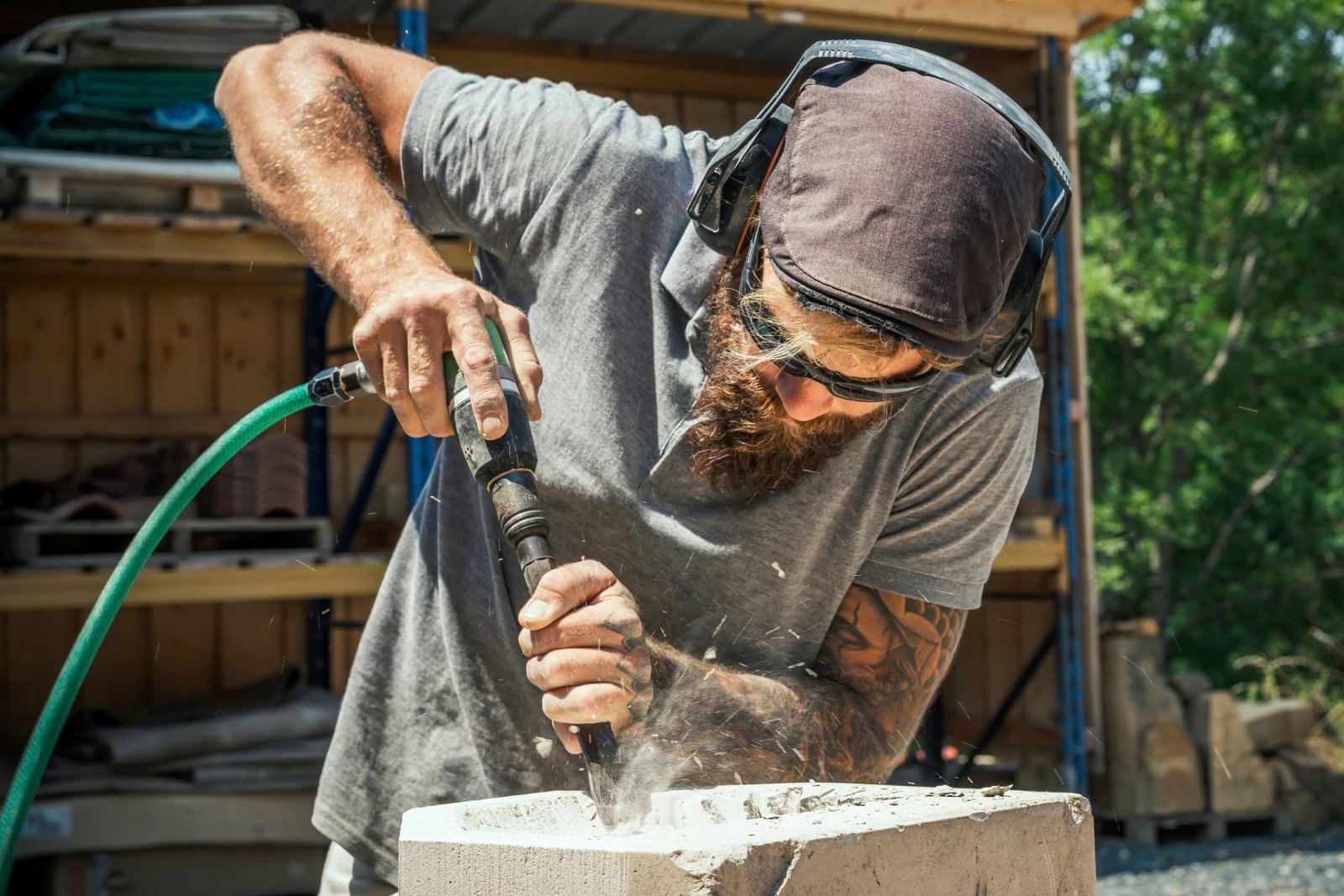
countertop installation is not just about aesthetics—it's about ensuring that your surfaces are durable, functional, and easy to maintain.
Installing a countertop is an essential step in transforming the functionality and aesthetics of your kitchen or bathroom. Whether you’re undertaking a countertop replacement, a kitchen countertop installation, or opting for a granite countertop installation, the right tools are critical for a smooth and successful installation. This guide will help you understand which tools are necessary for installing different types of countertops, including granite, quartz, and laminate.

For those looking for more information on the countertop installation cost or exploring further tips on this subject, you can explore this comprehensive guide on Countertop installation.
Introduction to Countertop Installation
Countertop installation can be a rewarding project, adding both value and functionality to your home. Whether you’re replacing an old countertop or installing a new one, the proper tools and techniques are necessary to achieve a clean, secure, and durable result.
Different countertop materials require different approaches, and each material requires specific tools for cutting, securing, and finishing. Materials like granite countertops or quartz countertops may demand a more professional approach, while countertop resurfacing and countertop repair projects may need a different set of tools altogether. Here, we will go over all the tools you need to successfully install your countertop.
Essential Tools for Countertop Installation
To ensure a smooth and successful installation, certain tools are indispensable. Let’s break down the tools needed for different stages of countertop installation.
1. Measuring Tools
Accurate measurements are critical for any countertop installation, whether you’re installing a kitchen countertop or replacing an old surface.
Key Tools:
- Tape Measure: For measuring the length, width, and depth of your countertop space.
- Ruler or Straightedge: For ensuring your cuts are straight and the installation is even.
- Pencil or Chalk: For marking where cuts should be made on the countertop surface.
- Carpenter’s Square: To check the angle of corners and ensure a precise fit.
2. Cutting Tools
Depending on the material you’re working with, different cutting tools will be required. This is one of the most important stages of countertop installation. For materials like granite or quartz, precise cutting is vital to prevent damaging the countertop.
Key Tools:
- Circular Saw: Perfect for cutting through laminate or wood countertops, providing clean and accurate cuts.
- Jigsaw: Ideal for cutting curves and corners, particularly in materials like laminate.
- Angle Grinder: Used for cutting granite, quartz, or other stone materials. Be sure to use a diamond blade for these materials.
- Wet Saw: Necessary for cutting stone materials like granite. A wet saw reduces dust and helps create smooth cuts.
For granite countertop installation or quartz countertop installation, these cutting tools are a must-have. For harder materials like stone, using a wet saw will minimize the dust and help keep the countertop intact.
3. Sanding and Smoothing Tools
After cutting, it’s essential to smooth out rough edges to prevent injury and provide a professional finish.
Key Tools:
- Orbital Sander: Ideal for smoothing rough edges on wood or laminate countertops.
- Hand Sander: Works well for small, intricate areas or finishing small details.
- Diamond Sanding Pads: When installing granite or quartz countertops, these specialized sanding pads are perfect for smoothing and polishing stone surfaces.
4. Securing Tools
Securing the countertop properly is crucial for a successful installation. This ensures the countertop is stable and doesn’t shift over time.
Key Tools:
- Clamps: Used to hold the countertop in place while the adhesive sets. These are particularly important when working with heavier materials like granite or quartz.
- Construction Adhesive: A heavy-duty adhesive is essential for holding the countertop to the base, whether it’s granite, wood, or laminate.
- Screws and Fasteners: Depending on the material, you may need screws to secure the countertop, especially if you’re working with heavy materials like granite.
- Caulking Gun: Necessary for applying silicone or construction adhesive. The caulking gun ensures a smooth and even application of adhesive.
5. Drilling Tools
Drilling is often necessary when installing a sink or faucet, or for making holes for other fixtures. For granite countertops installed, this step is critical.
Key Tools:
- Cordless Drill: A basic tool for drilling holes for sink or faucet installations.
- Hole Saw Kit: Used to create large, round holes for installing sinks or stovetops.
- Diamond Core Drill Bit: For drilling holes in hard materials like granite or quartz. These specialized bits ensure clean, precise holes.
6. Sealing and Finishing Tools
Sealing is a vital step in countertop installation, especially for natural stone materials like granite and quartz. Proper sealing prevents stains and protects the countertop surface from moisture damage.
Key Tools:
- Sealant Applicator: Used to apply a protective sealant to the countertop surface. This step is particularly important for granite and stone materials.
- Cloths or Towels: To wipe away excess sealant and polish the surface after application.
- Polishing Pad: After sealing, you can use a polishing pad to buff the surface and enhance its shine.
Specialized Tools for Stone Countertop Installation
When it comes to granite countertop installation or quartz countertop installation, the tools needed can be more specialized due to the materials’ density and hardness.
Wet Saw for Stone Countertops
A wet saw is essential when cutting through tough materials like granite or quartz. Wet saws keep the blade cool and reduce the amount of dust produced, ensuring a smooth cut. This is one of the most critical tools for granite countertops installed in any kitchen or bathroom.
Diamond Blades
For cutting, grinding, or polishing stone, diamond blades are necessary. These blades are designed to cut through hard stone materials like granite, marble, and quartz without damaging them.
Stone Adhesive
For countertop repair or installation of stone countertops, using a strong adhesive is crucial. Special stone adhesives ensure a secure bond between the stone countertop and the base, whether it’s a cabinet or a wall.
The Countertop Installation Process
Now that you’re familiar with the essential tools needed for countertop installation, let’s break down the general steps involved in the process.
Step 1: Measuring and Planning
The first step in installing a countertop is accurate measurement. Measure the area where the countertop will be installed and mark any areas that will need to be cut. When replacing an old countertop, be sure to carefully measure your new materials.
Step 2: Cutting the Countertop Material
Once your measurements are in place, it’s time to cut the material. Use the appropriate cutting tools for your chosen material (e.g., circular saw for laminate, wet saw for granite).
Step 3: Fitting and Securing the Countertop
Place the countertop in position and check the fit. Ensure that all edges are flush with the wall or cabinets. Use clamps to hold the countertop in place, and apply adhesive to secure it.
Step 4: Drilling for Sinks and Fixtures
If you’re installing an undermount sink or cutting holes for faucets, now is the time to drill. Use a drill and appropriate drill bits for the material (e.g., diamond core drill bits for granite).
Step 5: Sealing and Finishing
For granite countertop installation or quartz countertop installation, apply a sealant to protect the surface. Buff and polish the surface after sealing for a shiny, smooth finish.
Countertop Installation Cost and Hiring Professionals
The countertop installation cost can vary significantly based on factors like material choice, countertop size, and whether you’re hiring a professional. For kitchen countertop fitting, granite tends to be on the higher end, while laminate or butcher block may be more affordable.
If you’re looking for countertop installation near me, you can easily find professional installers with experience in handling various materials, including countertop resurfacing and countertop repair. Make sure to get quotes from multiple contractors to compare costs and services.
Conclusion
In conclusion, proper countertop installation requires the right tools, whether you’re installing granite, quartz, laminate, or performing a countertop replacement or countertop repair. Tools such as measuring devices, cutting tools, and adhesives are essential for a successful installation. When working with stone materials like granite or quartz, specialized tools like wet saws and diamond blades are necessary.
For those not confident in their DIY skills or dealing with complex materials, hiring a professional installer may be the best option. If you’re considering professional help, remember to compare quotes and check for certifications.
To learn more about the cost and details of countertop installation, visit Countertop installation.
By following the right steps and using the correct tools, you can ensure that your countertop installation project will be a success, creating a functional and aesthetically pleasing addition to your home.

